Thank you! Your submission has been received!
Oops! Something went wrong while submitting the form.

Coming soon to your 401(k)? BlackRock's new private equity target date fund
Key Points
- BlackRock's New Fund: BlackRock is launching a target-date fund including private equity and private credit, aiming to boost 401(k) returns by 0.5% annually, potentially increasing savings by 15% over 40 years.**
- Increased Risk Concerns: Experts highlight that these private market investments carry higher risks, fees, and lower liquidity compared to traditional index funds, posing challenges during market downturns.**
- Social Security Transparency Issues: The Social Security Administration has reduced public access to performance data, removing key statistics from its website and discouraging in-person visits, which impacts seniors without internet access.**
- Retirement Literacy Gap: Many Americans lack basic knowledge about Social Security and retirement planning, with nearly half guessing their savings needs and over 60% admitting insufficient investment understanding.**
- Investment Anxiety: Nearly half of Americans are hesitant to invest due to market volatility and retirement savings concerns, with experts advising diversified, long-term strategies to manage risk.**
Summary
This article by Kerry Hannon on Yahoo Finance covers several personal finance and retirement issues. BlackRock is introducing a target-date fund for 401(k)s that includes private equity and credit, promising higher returns but with increased risks, fees, and liquidity concerns. Meanwhile, the Social Security Administration has limited transparency by removing performance data from its website, urging online interactions despite accessibility challenges for many seniors. The piece also highlights a widespread lack of retirement literacy, with many Americans guessing their savings needs and lacking investment knowledge. Additionally, nearly half of Americans are wary of investing due to market volatility, with experts recommending diversified, long-term strategies. Hannon emphasizes the need for better education and risk management as economic uncertainties persist, affecting retirement planning for everyday investors.
yahoo
July 5, 2025
Stocks
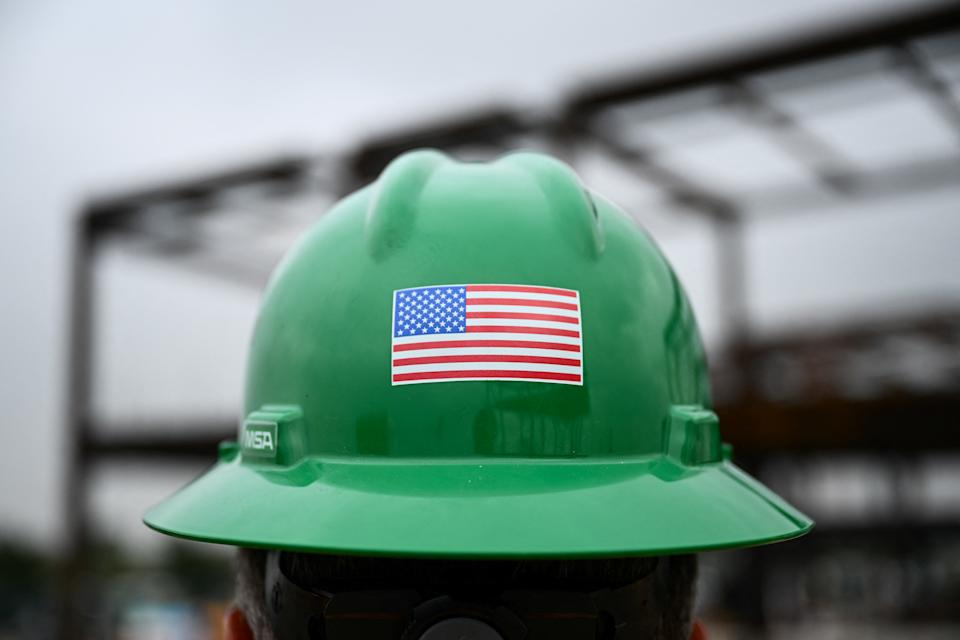
The Fed forecast that everyone's watching
Key Points
- Robust June Jobs Report: A surprisingly strong June employment report has significantly reduced the likelihood of a Federal Reserve rate cut in July, with markets now pricing in just a 5% chance, down from 24% a day prior.**
- Market Expectations Shift: Expectations for a September rate cut have also declined, with the probability dropping from 94% to 68% within a week, reflecting confidence in the economy's current strength.**
- Fed's Wait-and-See Approach: Economists suggest the Fed can maintain current policy, monitoring tariff impacts on inflation, as the labor market shows no immediate need for intervention.**
- Political Pressure on Fed: President Trump and Treasury Secretary Scott Bessent have criticized Fed Chair Jerome Powell, with calls for resignation and questions about the Fed's interest rate decisions, adding political tension.**
- Market Performance: Despite Fed policy uncertainties, the strong jobs data boosted the S&P 500 and Nasdaq to new all-time highs, signaling market optimism.**
Summary
A robust June jobs report has shifted expectations for Federal Reserve actions, significantly lowering the likelihood of a rate cut in July to just 5%, down from 24% a day earlier, as per the CME FedWatch Tool. The strong employment data also reduced the probability of a September cut from 94% to 68%, indicating confidence in the economy's resilience. Economists like Nancy Vanden Houten from Oxford Economics suggest the Fed can hold policy steady, observing tariff impacts on inflation, while Jeffrey Roach of LPL Financial notes the Fed's comfortable "wait-and-see" stance amid ongoing trade negotiations. Politically, the report intensifies White House criticism of Fed Chair Jerome Powell, with President Trump demanding his resignation and Treasury Secretary Scott Bessent questioning the Fed's rate decisions. Despite these tensions, the positive labor market news propelled the S&P 500 and Nasdaq to record highs, reflecting market optimism. The upcoming Consumer Price Index data on July 15 will provide further insight into inflation trends, continuing the macro play-by-play. Hamza Shaban of Yahoo Finance highlights how the jobs data and Fed policy expectations interplay with market sentiment and political narratives, shaping economic discourse.
yahoo
July 5, 2025
Stocks

Pittsburgh, St. Louis, and Detroit holding out as the last affordable housing markets
Key Points
- Affordable Housing Markets: St. Louis, Detroit, and Pittsburgh are the only three US metropolitan areas where median home prices remain affordable for households earning median incomes of $70,000 to $80,000, with homes listed under $300,000 as of May.**
- Income-to-Housing Cost Ratio: In these cities, purchasing a median-priced home costs between 27.4% (Pittsburgh) and 30% (St. Louis) of median household income, aligning with the affordability guideline of spending no more than 30% on housing.**
- Midwest Affordability: The Midwest stands out as a region with lower-than-average home prices, over $150,000 below the national average, though rising prices and limited new construction pose challenges to sustained affordability.**
- Price Appreciation Concerns: While home price growth has slowed nationally, the Midwest, including St. Louis, is experiencing steady single-digit appreciation, potentially threatening long-term affordability.**
- Mortgage Rate Impact: Current mortgage rates around 6.8% keep affordability limited to these three cities; rates would need to drop below 4% to make more metro areas accessible to average earners.**
Summary
As home prices and mortgage rates soar, only three US cities—St. Louis, Detroit, and Pittsburgh—offer median homes under $300,000, making them affordable for households earning $70,000 to $80,000 annually. In Pittsburgh, the most affordable, a median home at $250,000 costs 27.4% of the average $73,000 income, while St. Louis and Detroit hover near the 30% affordability threshold. The Midwest remains a bastion of lower home prices, over $150,000 below national averages, though rising costs and limited construction threaten this status. Realtors note St. Louis suburbs like Affton offer homes under $250,000, but prices are climbing at a steady single-digit pace. High mortgage rates, averaging 6.8% in May, exacerbate affordability challenges nationwide, with experts suggesting rates must fall below 4% to expand accessible markets. This highlights the compounding impact of elevated home prices and interest rates on housing costs, pushing many out of local markets and prompting consideration of Midwest relocation for budget-conscious buyers.
yahoo
July 5, 2025
Stocks
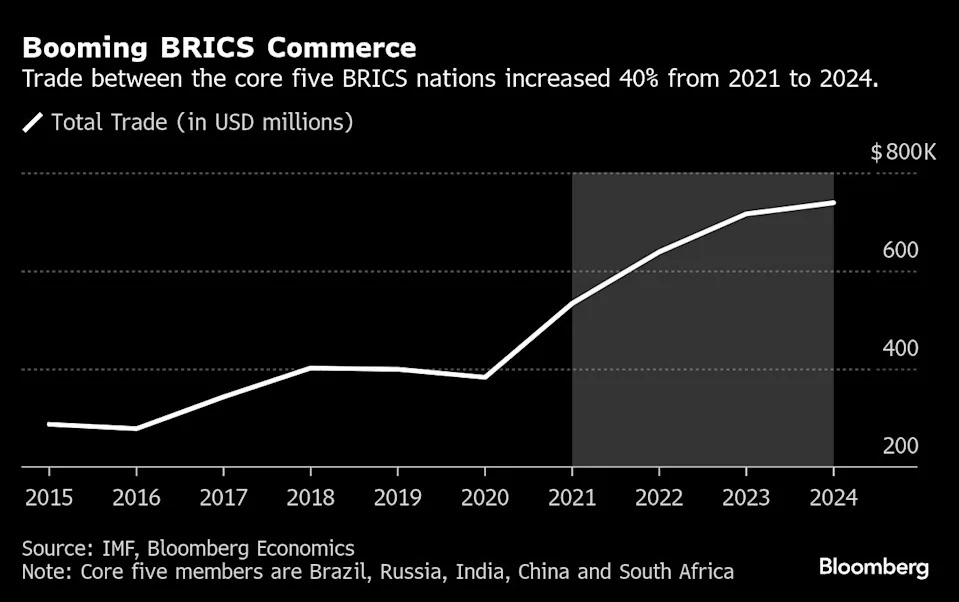
BRICS aspires to occupy ground vacated by US under Trump
Key Points
- BRICS Unity Against Tariffs: BRICS leaders, meeting in Rio de Janeiro, are set to issue a joint statement criticizing unilateral protectionist measures and tariff increases, implicitly targeting US President Donald Trump’s trade policies.**
- Defending Multilateralism: As Trump pursues an "America First" agenda, BRICS positions itself as a defender of free trade and multilateralism, seeking to fill the void left by the US in global economic leadership.**
- Expansion and Challenges: The group’s recent expansion to include nations like Egypt and Iran boosts its global representation (40% of GDP, half the world’s population), but internal divisions and lack of shared values hinder coherence.**
- Alternative Systems: Trump’s tariff threats, including potential 100% levies for ditching the dollar, have spurred BRICS interest in local payment systems and alternative trade mechanisms.**
- Climate and Geopolitical Focus: Discussions at the summit include climate finance initiatives, while geopolitical tensions, such as differing stances on war references, reveal ongoing fractures within the bloc.**
Summary
The BRICS summit in Rio de Janeiro, hosted by Brazilian President Luiz Inacio Lula da Silva, highlights the group’s renewed purpose amid US President Donald Trump’s tariff policies. Leaders from Brazil, Russia, India, China, and South Africa, along with newer members like Egypt and Iran, are poised to condemn protectionist measures in a joint statement, signaling opposition to Trump’s trade agenda without directly naming the US. As Trump alienates allies with his "America First" stance, BRICS aims to champion multilateralism and free trade, despite longstanding internal divisions and a lack of shared values. The bloc’s expansion enhances its global economic weight, representing 40% of GDP, but coherence remains elusive. Trump’s threats, including potential 100% levies for abandoning the dollar, have paradoxically encouraged BRICS to explore alternative payment systems and boost intra-bloc trade, which grew 40% to $740 billion between 2021 and 2024. Climate finance also emerges as a key topic, with China positioning itself as a reliable partner. However, absences by leaders like Xi Jinping and Vladimir Putin, alongside geopolitical tensions and rivalries (notably between China and India), underscore the challenges BRICS faces in becoming a unified global force. While Trump’s policies offer a rallying point, the group’s geopolitical influence is expected to grow only gradually, tied to its economic heft and potential further expansion.
yahoo
July 5, 2025
Stocks
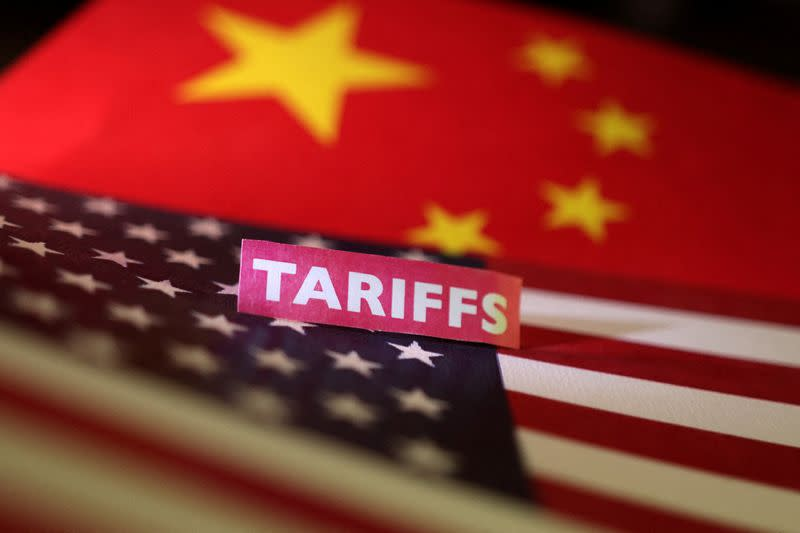
China shows signs of tackling the price wars that are taking a toll on its EV industry
Key Points
- Chinese Government Intervention: The Chinese government is addressing the intense competition and oversupply in the electric vehicle (EV) market, aiming to curb "involution"—meaningless competition—through regulatory measures and calls for fair competition.**
- BYD's Market Dominance and Price Wars: BYD, the market leader, reported a 31% sales increase to 2.1 million cars in the first half of the year but faced criticism for initiating price cuts that sparked industry-wide losses and panic.**
- Industry Concerns: Leaders like Great Wall Motors' chairman expressed fears of an unsustainable trajectory, comparing the situation to the collapse of Evergrande, while analysts warn of the risks of ongoing price wars.**
- Global Expansion and Tariffs: Chinese automakers, including BYD, are seeking profits abroad, with BYD's overseas sales doubling, though facing tariffs from the U.S. and EU over perceived unfair subsidies.**
- Supplier Payment Pledge: Seventeen automakers, including BYD, pledged to pay suppliers within 60 days to ease financial strain and reduce risks of a crisis similar to Evergrande's collapse.**
Summary
The Chinese electric vehicle (EV) market, the world's largest, is undergoing a dramatic transformation driven by industrial policy, but it faces challenges of oversupply and fierce price wars. Market leader BYD reported a 31% sales surge to 2.1 million vehicles in the first half of the year, yet its aggressive price cuts have drawn criticism for triggering industry-wide losses and panic. The government and industry bodies are stepping in to combat "involution"—pointless competition—warning that disorderly price wars threaten sustainable development. Concerns are mounting, with comparisons to the Evergrande collapse, as automakers delay supplier payments, risking financial instability. In response, 17 automakers, including BYD, pledged to pay suppliers within 60 days to alleviate pressure. Meanwhile, Chinese EV makers are expanding overseas, with BYD's foreign sales doubling, though they face tariffs from the U.S. and EU over subsidy concerns. Analysts and industry leaders, including Great Wall Motors' chairman, express pessimism about the market's health, while government intervention aims to stabilize the sector. The effectiveness of these measures in reversing price trends and sustaining EV demand remains to be seen.
yahoo
July 4, 2025
Stocks
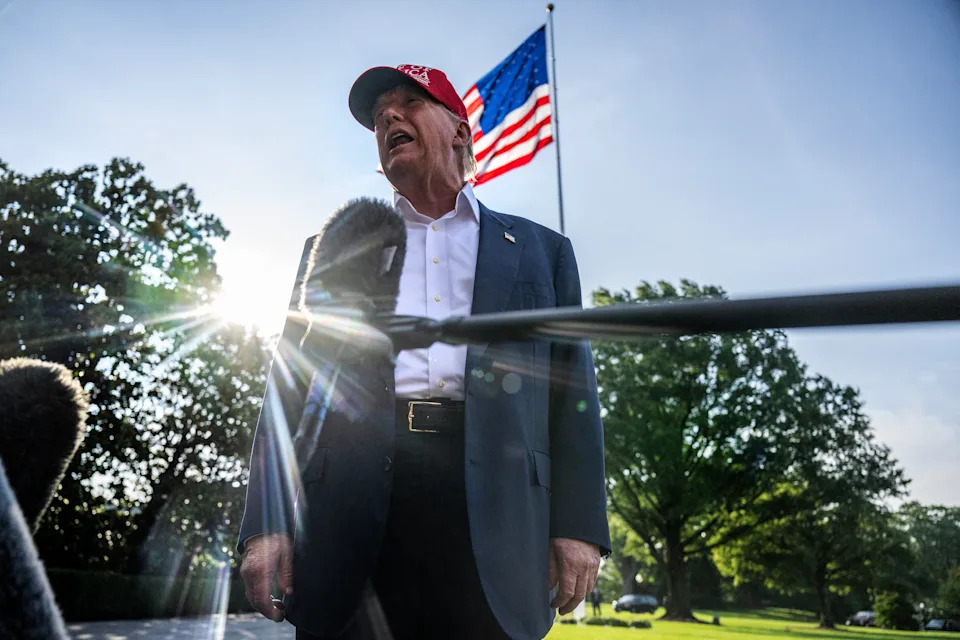
How 2 business world changes to Trump's megabill helped push the price tag $1 trillion higher
Key Points
- Corporate Tax Credits: Amendments making business tax credits permanent, such as depreciation and factory expensing, significantly increased the bill's cost from $519 billion in the House version to over $1 trillion in the Senate version.**
- Removal of Revenge Tax: The elimination of a proposed "revenge tax" on multinational businesses, following Wall Street objections, contributed to a $600 billion cost increase over the next decade.**
- Economic Growth Claims: Republicans and business leaders argue that these changes provide certainty for businesses and are expected to spur significant economic growth, with predictions of factory announcements in the near future.**
- Additional Costs: Other modifications, including shallower cuts to food assistance and student loans, added about $300 billion to the bill's cost, with increased borrowing leading to $713 billion in additional interest expenses.**
Summary
Recent amendments to President Trump's "big, beautiful bill" have drawn both praise and criticism. The business community has cheered changes that made corporate tax credits permanent and removed a proposed "revenge tax" on multinational firms, viewing them as catalysts for economic growth. However, these alterations significantly raised the bill's cost by over $1 trillion, with permanent tax credits alone escalating from $519 billion in the House version to over $1 trillion in the Senate's, according to the Committee for a Responsible Federal Budget. The removal of the revenge tax added a $600 billion increase over a decade, while other tweaks, like reduced cuts to social programs, contributed an additional $300 billion. Increased borrowing is projected to incur $713 billion in interest costs. President Trump, with his deep business background, took a keen interest in these provisions, which are touted by Republicans and business leaders as providing certainty and fostering innovation. Treasury Secretary Scott Bessent predicted a surge in factory announcements post-passage. Despite the optimism, Democrats criticize the bill's fiscal irresponsibility, with House Minority Leader Hakeem Jeffries condemning corporate giveaways. Passed by a narrow 218-214 House vote, the legislation heads to Trump's desk, but its high cost ensures it remains a contentious issue for future political debates.
yahoo
July 4, 2025
Stocks
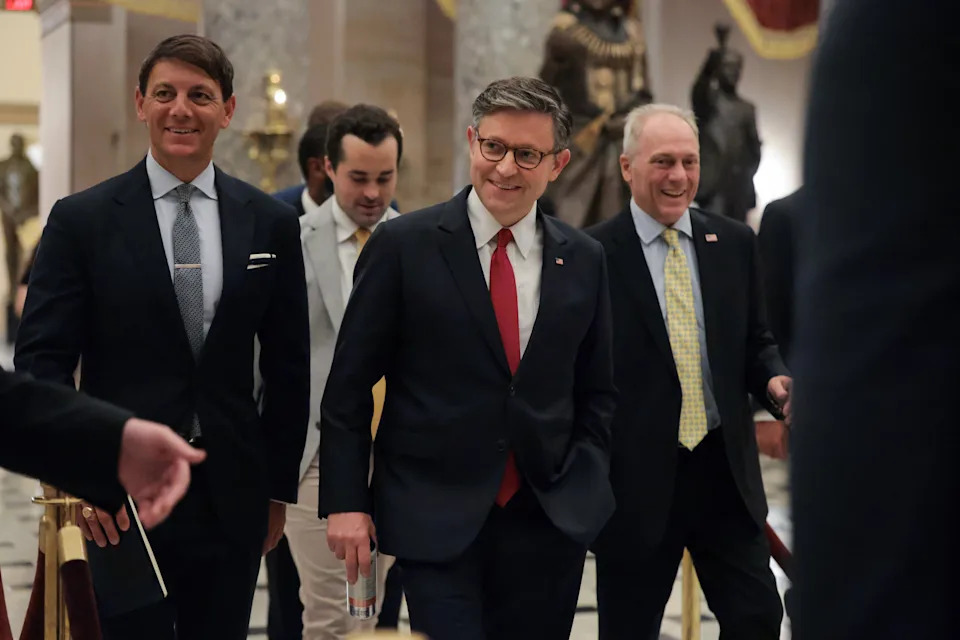
House passes Trump's 'big, beautiful bill' as opponents flip
Key Points
- House Vote: The House of Representatives passed Donald Trump's "Big, Beautiful Bill" with a narrow 218-214 vote, with only two Republicans, Reps. Thomas Massie and Brian Fitzpatrick, voting against it.**
- Economic Impact: The bill, carrying a multitrillion-dollar price tag, is set to reshape the US economy with major changes in taxes, energy, and healthcare, including a $5 trillion debt ceiling increase.**
- Healthcare Controversy: The healthcare provisions are highly contentious, projected to save hundreds of billions but potentially leave 11.8 million Americans uninsured by 2034, drawing sharp criticism from Democrats.**
- Political Fallout: Democrats vow to make the bill a political burden for Republicans, focusing on its unpopular healthcare cuts, while public support wanes, as shown in recent polls.**
- Energy Policy Shift: The legislation moves the US away from renewable energy, eliminating electric vehicle credits by September 30, despite opposition from figures like Tesla CEO Elon Musk.**
Summary
The House of Representatives narrowly passed Donald Trump's "Big, Beautiful Bill" by a 218-214 vote, sending it to the president for signing after intense debate. The legislation, celebrated by House Speaker Mike Johnson as a major Trump victory, promises significant economic changes through tax reforms, energy policy shifts, and healthcare cuts, alongside a $5 trillion debt ceiling increase. However, it faced fierce opposition, notably from Democrats led by Hakeem Jeffries, who criticized it as a "crime scene" during a record-breaking speech. The bill's healthcare provisions, expected to leave millions uninsured, have sparked public discontent and Democratic pledges to weaponize it politically. Energy policies, including the elimination of electric vehicle credits, drew criticism from figures like Elon Musk. Despite internal Republican dissent over the bill's fiscal and moral implications, promises of executive actions from Trump swayed enough holdouts to secure passage without amendments. The multitrillion-dollar package, projected to balloon the national debt past $40 trillion, remains divisive, with polls showing declining support as its impacts on American pocketbooks and coverage become clearer.
yahoo
July 4, 2025
Stocks

July rate cut from Fed is 'now completely off the table' following solid jobs report
Key Points
- Strong Jobs Report: The June jobs report showed the US economy added 147,000 nonfarm payrolls, surpassing expectations of 106,000, and the unemployment rate dropped to 4.1%, against forecasts of a rise to 4.3%.**
- Rate Cut Unlikely: The odds of a Federal Reserve rate cut at the July 28-29 meeting plummeted to near 5% from 25%, as per the CME FedWatch tool, with experts like Joe Brusuelas of RSM declaring a July cut "completely off the table."**
- Fed's Patient Stance: Fed Chairman Jerome Powell emphasizes a patient approach to rate cuts, citing a resilient economy and the need to assess the impact of President Trump's tariffs on inflation.**
- Political Pressure: Trump continues to pressure Powell and the Fed board for rate cuts, criticizing their inaction and calling for Powell's resignation, despite the strong economic indicators.**
- Tariff Concerns: Powell noted that the Fed paused rate cuts due to significant tariffs introduced by the Trump administration, which have raised inflation forecasts and influenced monetary policy decisions.**
Summary
The prospect of a Federal Reserve rate cut at the upcoming July 28-29 meeting has virtually disappeared following a robust June jobs report, which added 147,000 nonfarm payrolls—exceeding expectations—and saw the unemployment rate fall to 4.1%. This data has alleviated fears of a slowing US economy, leading experts like RSM's Joe Brusuelas to assert that a July cut is "completely off the table," with market odds dropping to near 5%. Fed Chairman Jerome Powell continues to advocate for patience, highlighting the economy's strength and the need to evaluate the inflationary impact of President Trump's tariffs, which have already prompted a pause in rate reductions. Despite political pressure from Trump, who has criticized Powell and the Fed board for inaction and even called for Powell's resignation, the Fed remains cautious. While some Fed governors support a July cut, Powell has not ruled it out but stresses that decisions will hinge on evolving data. The tension between a strong economy and calls for looser monetary policy underscores a complex policy landscape, with tariffs adding further uncertainty to inflation forecasts.
yahoo
July 3, 2025
Stocks

US Job Growth Picks Up With Help From Public Education Hiring
Key Points
- US job growth in June surpassed expectations with a payroll increase of 147,000, largely due to a significant rise in state and local government employment, particularly in education.
- Private sector hiring slowed to just 74,000 new jobs, the lowest since October, reflecting concerns over trade policies, tariff hikes, and restrictive monetary policies.
- The unemployment rate dropped to 4.1%, indicating employer reluctance to lay off workers, while the labor force participation rate also declined.
- Treasury yields and the S&P 500 rose as the report reduced pressure on the Federal Reserve to cut interest rates immediately, with Fed Chair Jerome Powell emphasizing a cautious approach.
- The foreign-born labor force declined for the third consecutive month, influenced by the Trump administration’s immigration policies, potentially impacting labor market dynamics.
Summary
The US labor market in June showed unexpected strength with a payroll increase of 147,000, driven by a surge in state and local government jobs, especially in education, according to a Bureau of Labor Statistics report. However, private sector hiring slowed significantly to 74,000, the lowest since October, amid concerns over President Trump’s trade policies and tariff hikes. The unemployment rate fell to 4.1%, suggesting employers are hesitant to cut jobs, though labor force participation also dropped. Treasury yields and the S&P 500 rose as the data eased pressure on the Federal Reserve to lower interest rates immediately, with Fed Chair Jerome Powell advocating patience until tariff impacts on inflation are clearer. Meanwhile, the foreign-born labor force shrank for the third straight month, influenced by immigration policies, raising concerns about labor supply. Other indicators, like recurring jobless claims and consumer confidence, point to a cooling market, while wage growth slowed and the workweek shortened. Demographic disparities were evident, with Black unemployment rising to 6.8%, the highest since early 2022. Economists suggest the Fed will maintain a cautious stance on rate cuts, awaiting further inflation data.
yahoo
July 3, 2025
Stocks

Trump: Fed's Powell 'should resign immediately'
Key Points
- Trump's Criticism and Call for Resignation: President Trump has intensified pressure on Federal Reserve Chairman Jerome Powell, publicly criticizing him for not lowering interest rates and demanding his immediate resignation via Truth Social, nicknaming him "Too Late."**
- Administration's Support for Investigation: Members of Trump's administration, including Treasury Secretary Scott Bessent and Federal Housing Finance Agency Director Bill Pulte, have echoed calls for Powell's resignation and urged Congress to investigate Powell for alleged political bias and misleading Senate testimony.**
- Potential Successors Identified: A short list of potential successors for Powell, whose term as chair ends in May, includes former Fed governor Kevin Warsh, Treasury Secretary Scott Bessent, and others, with discussions on appointing a new chair or filling board seats.**
- Powell's Stance on Term and Policy: Powell insists his removal before his term ends is not legally permitted and remains focused on achieving economic stability, while not ruling out future rate cuts despite concerns over inflation from Trump's tariffs.**
- Mixed Signals from Trump: Trump has sent conflicting messages about removing Powell, previously stating a desire for his termination but later denying any intention to fire him, while Powell continues to prioritize his duties amidst the criticism.**
Summary
President Trump has escalated his criticism of Federal Reserve Chairman Jerome Powell, demanding his immediate resignation in a Truth Social post and labeling him "Too Late" for not lowering interest rates. This week, Trump and his administration, including Treasury Secretary Scott Bessent and Federal Housing Finance Agency Director Bill Pulte, have intensified pressure on Powell, with calls for congressional investigations into his alleged political bias and misleading Senate testimony regarding Fed headquarters renovations. A short list of potential successors for Powell, whose term as chair ends in May, includes figures like Kevin Warsh and Bessent, with discussions on filling upcoming Fed board seats. Powell, however, maintains that his removal before term's end is illegal and remains committed to economic stability goals, despite concerns over inflation from Trump's tariffs impacting rate decisions. Trump has sent mixed signals about firing Powell, while the Fed chair focuses on his duties, leaving open the possibility of rate cuts depending on economic data. This ongoing conflict highlights tensions between the White House and the Federal Reserve over monetary policy and leadership.
yahoo
July 3, 2025
Stocks

Trump's immigration crackdown is hurting sales of America's most popular beer
Key Points
- Consumer Sentiment Impact: Constellation Brands, owner of Modelo and Corona, reports a decline in consumer sentiment among its core Hispanic consumer base due to President Trump's immigration crackdown, leading to reduced beer consumption occasions.**
- Beer Volume Decline: The company experienced a 3.3% drop in beer shipment volumes in the latest quarter, slightly worse than Wall Street's expected 2.4% decline.**
- Financial Performance: Constellation Brands missed revenue and earnings expectations for Q1 2026, reporting $2.52 billion in revenue and $3.22 per share against forecasts of $2.55 billion and $3.32 per share.**
- Hispanic Consumer Behavior: Fears related to ICE raids and deportation scares have led Hispanic consumers to limit social activities and outings, reducing beer consumption opportunities.**
- Market Challenges: Despite Modelo Especial being the top beer in the US, the brand faces growth challenges due to scale, alongside broader industry issues like declining alcohol consumption among younger consumers.**
Summary
Constellation Brands, the owner of Modelo and Corona, is facing significant challenges due to President Trump's immigration crackdown, which has negatively impacted consumer sentiment among its core Hispanic demographic, representing roughly half of its beer business. CEO Bill Newlands noted a decrease in social occasions and outings among these consumers, contributing to a 3.3% drop in beer shipment volumes in the latest quarter, exceeding Wall Street's expected 2.4% decline. Financially, the company missed Q1 2026 expectations with $2.52 billion in revenue and $3.22 per share against forecasts of $2.55 billion and $3.32. Experts suggest that fears of ICE raids and deportation, alongside economic pressures like slowing construction job growth, are causing Hispanic consumers to alter routines, reducing beer consumption opportunities. Despite Modelo Especial holding the top spot in the US beer market, it faces scale challenges and broader industry trends, including declining alcohol use among younger consumers and potential tariff impacts. Constellation reiterated a modest 0%-3% growth forecast for beer sales but expects a significant 17%-20% decline in wine and spirits. While the stock rose over 4.5% recently, it has fallen more than 20% this year due to these multifaceted risks.
yahoo
July 3, 2025
Stocks

House GOP Leader Says Party Will Meet Trump Tax Bill Deadline
Key Points
- House Republicans struggled with a procedural vote to advance Donald Trump’s major tax and spending package, keeping the vote open for hours to meet a July 4 deadline.
- Despite confidence from House Speaker Mike Johnson and Trump, resistance from cost-conscious conservatives and swing-district moderates has delayed progress, with five Republicans voting “no” and eight withholding votes.
- The legislation, dubbed Trump’s “big beautiful bill,” includes significant tax cuts, a phase-out of Biden-era clean energy incentives, and funding for immigration crackdowns, but faces criticism over deep cuts to Medicaid and safety-net programs.
- Failure to pass the bill would be a major political setback for Trump, who has expressed frustration over delays and threatened to oppose reelection of dissenting Republicans.
- Any changes to win over House Republicans could delay the bill further, missing the deadline and risking alienation of moderates due to steeper Medicaid cuts in the Senate version.
Summary
House Republicans faced significant hurdles in advancing Donald Trump’s expansive tax and spending legislation, keeping a critical procedural vote open for hours to meet the president’s July 4 deadline. Despite assurances from House Speaker Mike Johnson and Trump himself, resistance from fiscal conservatives and moderates in swing districts has stalled progress, with several Republicans voting against or withholding support. The bill, a cornerstone of Trump’s agenda, promises historic tax cuts, eliminates Biden-era clean energy incentives, and funds immigration enforcement, but draws criticism for slashing Medicaid and safety-net programs. A failure to pass would be a major blow to Trump, who has publicly vented frustration and threatened political consequences for dissenting lawmakers. Challenges persist as potential concessions to hardliners could alienate moderates and necessitate further Senate votes, risking delays. Johnson and Trump remain determined, with intense lobbying efforts underway to secure the necessary votes, though the outcome remains uncertain as internal party divisions highlight the delicate balance in a closely divided House.
Ken Tran and Jack Fitzpatrick
July 3, 2025
Stocks

Paramount Settles Trump’s ‘60 Minutes’ Suit for $16 Million
Key Points
- Paramount Global (PARA) settled a lawsuit with President Donald Trump for $16 million over alleged election interference by CBS, related to edited versions of a 60 Minutes interview with Kamala Harris.
- The settlement does not include an apology, but CBS agreed to release transcripts of future presidential candidate interviews, amid scrutiny over a pending merger with Skydance Media.
- Trump had sought $20 billion in damages, though no money will be paid to him directly; remaining funds after plaintiff fees will go to a future presidential library.
- Critics argue that settlements by media and tech companies, including Paramount, Disney, and Meta, reflect efforts to avoid retribution and maintain White House access.
Summary
Paramount Global (PARA) settled a lawsuit with President Donald Trump for $16 million over claims of election interference by CBS, stemming from edited versions of a 60 Minutes interview with Kamala Harris in October. Trump alleged the edits misled the public, though CBS defended its editorial choices as standard practice for clarity and brevity. The settlement, which excludes an apology, mandates CBS to release future presidential candidate interview transcripts and is seen as pivotal for Paramount’s merger approval with Skydance Media. No funds go directly to Trump; the remainder after plaintiff fees will support a future presidential library. This follows similar settlements, including Disney’s $15 million agreement with Trump over defamation claims and Meta’s $25 million payout for suspending his social media accounts. Critics suggest these resolutions by media and tech giants aim to preserve White House access and avoid retribution. Meanwhile, Trump-appointed FCC Chair Brendan Carr is probing CBS’s editing practices and other networks for political bias, alongside ongoing lawsuits against various media entities. Paramount’s internal editorial tensions, including the departure of 60 Minutes executive producer Bill Owens citing reduced independence, and Chair Shari Redstone’s scrutiny of story content, further complicate the narrative around media autonomy and corporate strategy amid regulatory and political pressures.
yahoo
July 2, 2025
Stocks

Trump slams Elon Musk as his megabill drops AI protections and hits snags in Senate
Key Points
- Trump-Musk Conflict: President Trump criticized Elon Musk on Truth Social, targeting subsidies for Musk's companies like Tesla, suggesting they might force Musk to "close up shop" without them, while Musk retaliated by dismissing the importance of subsidies and advocating for the removal of oil and gas subsidies.**
- AI Regulation Setback: A plan to shield the AI industry from state and local regulations was stripped from Trump's "big, beautiful bill" after Sen. Marsha Blackburn opposed a compromise, leading to a 99-1 Senate vote to remove the provision.**
- Bill in Jeopardy: Trump's legislative package faces uncertainty as key Republican senators, including Lisa Murkowski and Susan Collins, remain uncommitted, potentially joining others to sink the bill.**
- Musk's Political Threats: Musk escalated tensions by threatening to ensure Republican lawmakers who support the bill lose their primaries, leveraging his significant financial influence from the 2024 campaign.**
- Silicon Valley Divide: The rift between Trump and Silicon Valley, particularly over the bill's changes like taxing green energy and supporting fossil fuels, continues to widen, with Musk at the forefront of the opposition.**
Summary
President Trump and Elon Musk are embroiled in a public feud over Trump's "big, beautiful bill," with Trump attacking Musk's reliance on government subsidies for companies like Tesla via Truth Social, while Musk counters that his businesses would survive without them and calls for ending oil and gas subsidies. This conflict coincides with a deepening divide between Trump and Silicon Valley, exacerbated by changes in the bill that favor fossil fuels and tax green energy. Meanwhile, a significant setback occurred when a provision to protect the AI industry from state regulations was removed from the bill after Sen. Marsha Blackburn rejected a compromise, resulting in a near-unanimous Senate vote to strip it. The bill's future is uncertain as key Republican senators remain uncommitted, potentially dooming its passage. Musk has intensified the drama by threatening to unseat Republican supporters of the bill in primaries, leveraging his substantial political donations from 2024. As Senate amendments continue and the House prepares to vote, the clash between Trump and Musk, alongside Silicon Valley's broader discontent, underscores significant political and economic tensions.
yahoo
July 1, 2025
Stocks

A chaotic 6 months for stocks shows investors are still leaning 'bullish' headed into the second half of 2025
Key Points
- Record Highs for S&P 500: The S&P 500 reached a record high by the end of the first half of 2025, recovering from a significant 19% drop in April.**
- Market Resilience: Despite initial fears over Trump's tariffs, AI competition from China, and Middle East tensions, the market rebounded quickly, with investors buying dips.**
- Tariff Impact and Recovery: Trump's "Liberation Day" tariff announcement caused a 10% drop in three days, but the index recovered within a month due to tariff delays.**
- Investor Sentiment: Bullish sentiment persists, with retail investors contributing significantly to inflows, including a record $3 billion in net purchases on April 3.**
- Future Outlook: Wall Street anticipates continued growth, driven by pressure on money managers to outperform and positive earnings outlooks, with potential Federal Reserve rate cuts on the horizon.**
Summary
The S&P 500 achieved a record high by the end of the first half of 2025, marking a remarkable recovery from a 19% plunge in April triggered by fears over President Trump’s tariffs. Despite challenges like AI competition from China and Middle East tensions, the market rebounded swiftly, with investors capitalizing on pullbacks. A notable 10% drop followed Trump’s "Liberation Day" tariff announcement on April 2, but the index recovered within a month as tariff delays eased concerns. Retail investors played a significant role, with a record $3 billion in net purchases on April 3. Bullish sentiment prevails, as noted by experts like Charles Schwab’s Joe Mazzola and Interactive Brokers’ Steve Sosnick, who highlight a sense of invincibility among traders. Looking ahead, Wall Street, including Fundstrat’s Mark Newton and Morgan Stanley’s Mike Wilson, remains optimistic, citing pressure on money managers to outperform and improving corporate profit outlooks. With potential Federal Reserve rate cuts in sight, the market is poised for further gains despite possible third-quarter consolidation.
yahoo
July 1, 2025
Stocks

Trump tariffs live updates: Trump threatens to send Japan new tariff rate; EU open to universal tariffs
Key Points
- July 9 Deadline: President Trump's self-imposed deadline for tariff negotiations is approaching, with mixed signals from the administration about potential extensions, as Trump suggests he may not need to extend it while Treasury Secretary Scott Bessent warns of reverting to steep "Liberation Day" tariffs for non-compliant countries.**
- EU Trade Talks: The European Union is prepared to accept a 10% universal tariff on exports to the US but seeks exemptions for key sectors like pharmaceuticals, alcohol, semiconductors, and aircraft, while also pushing for lower duties on autos, steel, and aluminum.**
- Japan Tariff Threat: Trump has threatened Japan with new tariff rates via a letter, citing their refusal to accept US rice exports, amidst ongoing trade talks and a potential return to a 24% tariff rate if no deal is reached by July 9.**
- Canada's Concession: Canada scrapped its digital services tax on US tech companies like Apple, Amazon, and Alphabet just before implementation, leading to resumed trade talks with the US after Trump's threat to halt negotiations.**
- Price Impact: Tariffs are beginning to affect consumers, with prices of China-made goods on Amazon rising faster than US inflation, indicating the broader economic impact of Trump's tariff policies.**
Summary
As President Trump's self-imposed July 9 deadline for tariff negotiations nears, global trade tensions are escalating. Trump has expressed confidence in meeting the deadline without extension, while Treasury Secretary Scott Bessent warns of reverting to high "Liberation Day" tariffs for uncooperative nations. The European Union is open to a 10% universal tariff on exports to the US but seeks exemptions for key industries like pharmaceuticals and semiconductors, alongside reduced duties on autos and steel. Meanwhile, Trump has threatened Japan with new tariffs over their refusal to accept US rice, and Canada averted a crisis by scrapping a digital services tax on US tech giants, resuming trade talks. The economic impact is already visible, with prices of China-made goods on Amazon outpacing US inflation. With only one signed deal with the UK so far, countries are racing to finalize agreements before the deadline, amid uncertainty over potential extensions and the broader implications of Trump's tariff policies on global trade and consumer costs.
yahoo
July 1, 2025
Stocks